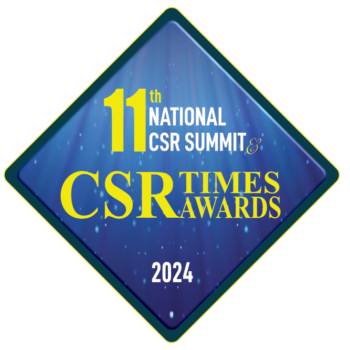REFORMATION
Gallaudet University showing deaf the way to glory
For more than 150 years now, the hearing impaired across the world have been looking forward to Gallaudet University not just for higher education but also research and innovation in sign language and newer technology to help the hard of hearing lead a smooth and respectable life.
Education is the kindling of a flame, not the filling of a vessel,” said Socrates. Every individual has this flame deep within and education stimulates it. Gallaudet University is for more than 150 years now kindling flames within deaf and hard of hearing students from across the world. Students from the United States and more than 25 countries, coming from diverse backgrounds, having varied ambitions and communicating in different languages, congregate at Gallaudet for higher education and to prepare for different careers. Once a grammar school for the hearing and visually impaired, today Gallaudet University is the only institute of higher learning for the hard of hearing in which all the programmes and services are specially designed for them. Located on a 99-acre (40-hectare) campus in Washington DC, it still remains the only higher education institution in which all programmes and services are specifically designed for deaf and hard of hearing students. The university offers BA, MA and PhD programme in an American sign language (ASL); is the world’s largest publisher of books about and for the deaf community; is the leader in Deaf Space architectural design; and has an extensive network of international service projects and internships. The University owes its existence to Amos Kendall, an American lawyer, journalist and politician who was the editor-in-chief of the Argus of Western America, an influential newspaper in Frankfort, and who became one of the most important figures in the transformation of the American news media in the 19th century. Kendall served on the board of Platt H. Skinner’s School for Deaf. Skinner came to Washington DC to help raise money for a school for the deaf and Kendall donated his home and two acres (0.8 hectares) of land at Kendall Green for a deaf and blind school in Washington DC. On February 16, 1857, Congress passed a legislation giving the Kendall School a charter as the Columbia Institution for the Education of the Deaf and Dumb and the Blind. Three months later, Kendall hired Edward Miner Gallaudet as the school’s first superintendent, while Kendall took charge of the presidency of the institution’s board of directors.
Later Gallaudet felt that a children’s school was not enough and a degree college should be established. Gallaudet sought college status for the Columbia Institution and on April 8, 1864, President Abraham Lincoln signed a bill which authorized the Columbia Institution to award college degrees. Congress passed a legislation transforming the Columbia Institution into the National Deaf-Mute College. The Kendall School remained a unit of the college, and in 1865, Congress appropriated money for the purchase of 14 acres (5.6 hectares) of Kendall Green to form the grounds of the new college and permit construction of new instructional buildings. In 1857, the 34th Congress named the grammar school for deaf as the Columbia Institution for the Instruction of the Deaf and Dumb and the Blind and funded tuition costs for indigent deaf, dumb (mute), or blind children belonging to the District of Columbia. Seven years later, in 1864, the 38th Congress authorized the institution to grant and confirm college degrees. The collegiate department became known as the National Deaf-Mute College. The following year, in 1865, the 38th Congress removed the instruction that the institution was to educate the blind, and renamed it the Columbia Institution for the Instruction of the Deaf and Dumb.
In 1954, Congress amended the charter of the institution, changing the corporate name to Gallaudet College, which had been the official name of the collegiate department since 1894. This first college of the deaf eventually became Gallaudet University in 1986 when Congress again amended the charter of the institution and renamed it Gallaudet University. Gallaudet University, however, was named after Thomas Hopkins Gallaudet, a pioneer in the education of the deaf. Father of Edward Miner Gallaudet, he along with Laurent Clerc and Mason Cogswell had co-founded the first institution for the education of the deaf in North America, and was its first principal. In 1868-69, the first batch of students completed a full course of college studies and graduated with bachelor’s degrees. In 1887, women students were allowed to the university for the first time. Gallaudet was the president of Gallaudet College/Columbia for 46 years (1864- 1910), was the head administrator for 53 years (1857-1910), and the President of the Board of Directors for 47 years (1864- 1911). He is known as a staunch advocate of sign language who also accepted the value of speech training. The Gallaudet University offers several programmes and majors and the most popular ones are business, visual and performing arts, communication studies, physical education and psychology. Gallaudet University offers 30 graduate programmes in 10 departments as well as online courses. It has agreements with several junior colleges in the country including Austin Community College, Austin, Texas; Kapi’olani Community College, Honolulu, Hawaii; Ohlone College, Fremont, California; John A. Logan College, Carterville, Illinois; and Northern Essex Community College, Haverhill, Massachusetts.
The emphasis has always been on quality education at Gallaudet and hence more than 90 per cent of the classes have less than 20 students. The university is also known for the Gallaudet Research Institute (GRI) which is internationally recognized for its leadership in deafnessrelated research. GRI researchers gather and analyze data concerning the social, academic and perceptual characteristics of deaf and hard of hearing populations, primarily to provide information needed by educators in the field. Gallaudet University publishes three journals. While Sign Language Studies is being published since 1972, the university launched the Deaf Studies Digital Journal, the first peer-reviewed academic and creative arts journal in American sign language and English. The Gallaudet University Press also publishes American Annals of the Deaf, the oldest English-language journal dealing with deafness and the education of deaf. The university also created an example for the world to see and learn by appointing a deaf president in 1988. Student strikes in 1988 revolutionized the perception and education of deaf culture. Alumni, faculty, staff and students demanded that the next president of the university be deaf. After a week of protest and activism, I. King Jordan became the first deaf president and the movement came to be known as Deaf President Now (DPN).
Gallaudet University is officially bilingual, with ASL and English used for instruction and by the college community. Although there are no specific ASL proficiency required for admission to undergraduate courses, many graduate programmes require varying degrees of knowledge of the language as a prerequisite. Nonetheless, the credit for the modern-day ASL also goes to an educator at Gallaudet College — William C. Stokoe— who joined to taught English but brought a revolution in the sign language. Because of him, today ASL meets the full criteria of linguistics phonology, morphology, syntax, semantics and use of language to be classified a fully developed language. There is no end to stories of research and innovation at this institute of higher learning. New methodologies and techniques in teaching have been a part of Gallaudet’s culture. Real Time Text (RTT) is the latest. Gallaudet’s senior research engineer Norman Williams now holds the patent for RTT which phases out tele typewriter (TTY) systems and help the hearing impaired transition to smart phones. The hard of hearing throughout the world look forward to more innovations at Gallaudet. Way to go, Gallaudet University! Keep up the good work.




































